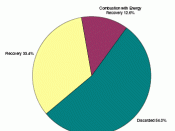ABSTRACT:
Process Engineered Fuels (densified fuels) have frequently been criticized as being too costly to be a major player for renewable fuels. Much of this criticism originated from some early plants that were hastily constructed in the late 1970s during the first oil crisis. They suffered from poor planning and full understanding of what it took to compete with liquid fossil fuels when oil prices returned to normal. Plants that did have the foresight and knowledge to compete during normal timeshave survived to become role models for those seriously interested in renewable, economical and clean fuels for the future. Some veteran firms have successfully shown themselves capable of competing directly with liquid fossil fuels. They have each passed the tests of time and quality. They produce a viable fuel that is now called PEF(Processed Engineered Fuels). By the definition established by the Pellet Fuels Institute, these fuels are produced from waste products, are pelleted, are environmentally clean and have been designed to be traded as a commodity.
This paper discusses PEF as a modern source of energy.
INTRODUCTION:
Plastics are derived from petroleum and natural gas and have a very high energy content. Today, there is increased interest in using segregated post-use plastics and paper in industrial fuel applications. This recovery option complements conventional mechanical recycling and feedstock recycling of plastics and differs from traditional waste-to-energy. When post-use paper and plastics derived from residential, commercial, and industrial sources are used as an industrial fuel, they are in the form of a manufactured product called Process Engineered Fuel or PEF. The conventional PEF produced today contains 70-90% paper and the remaining percentage is plastic. PEF is not waste, but a marketable product that must meet strict end-user requirements for a solid fuel. PEF is an important component of...



Good esay
This made me think aboout renwable enry sources and PEF sounds like a promising one. I myslef feel corn oil is better, but PEF can still be used as a supplement.
2 out of 2 people found this comment useful.